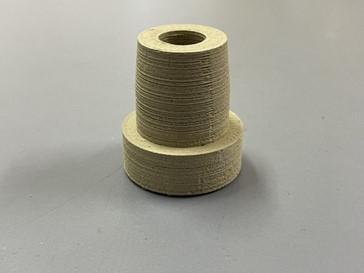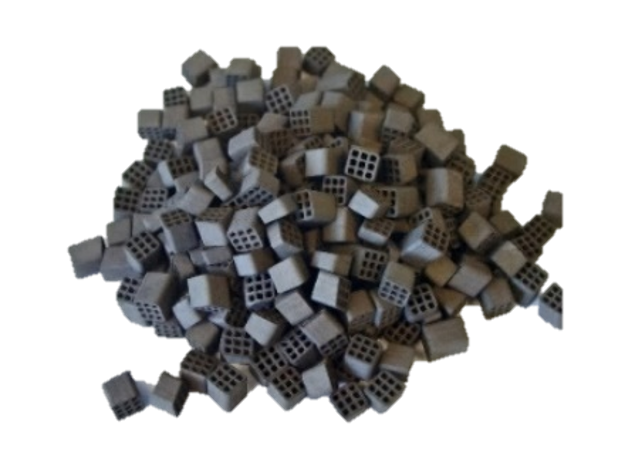Introduction
The generic term sorption refers to the accumulation or absorption of a fluid, i.e. liquid, gaseous or supercritical phase onto or into a solid or liquid phase. Based on the phase transition, a distinction is made between adsorption, in which particles are simply deposited on the boundary layer, and absorption, in which the particles dissolve in the solid or liquid phase in addition to being deposited.
About the research group
The focus of the research group is on the (further) development of new measurement methods and measuring devices for issues that have not yet been experimentally accessible. Different measuring principles are used and adapted to the respective problem. Special attention is paid to the application of gravimetric measurement technology and in particular to the so-called magnetic suspension balance (MSW). This technology uses magnetic force transmission to decouple the sensitive weighing unit from the measuring atmosphere.


Prof. Dr Tobias Fieback
Head of the research group Sorption
Professorship for Technical Thermodynamics
Lampadius-Bau
Room 306
Gustav-Zeuner-Straße 7
09599 Freiberg
+49 3731 39-3960
Tobias [dot] Fieback [at] ttd [dot] tu-freiberg [dot] de
Other members of the research group group
| Name, first name | Title | Telephone | |
|---|---|---|---|
| Markuske, Katrin | M.Sc. | +49 3731 39-3643 | Katrin [dot] Markuske [at] ttd [dot] tu-freiberg [dot] de |
| Khajryan, Kabriil | M.Sc. | +49 3731 39-3155 | Kabriil [dot] Khajryan [at] ttd [dot] tu-freiberg [dot] de |
Fields of research
Materials research and substance characterisation in the field of gas-phase adsorption
- Determination of active surfaces (BET) and heats of adsorption
- Volumetric measurements on a variety of sorbent-sorptive systems to create a database (screenings)
- Sorption equilibria, kinetics and process-sorptive heats of adsorption from vacuum to 40 MPa
- Determination of sorption isotherms
- Realisation of extreme measurement conditions (high temperatures and pressures, corrosive, aggressive, toxic and explosive media)
- . pressures, corrosive, aggressive, toxic and explosive media)
Thermogravimetric analyses
- Determination of maximum solubilities and diffusion coefficients of gases in liquids or melts (including molten metals)
- Drying of solids
- Vacuum up to 2 MPa at temperatures up to 1,200°C
- Vacuum up to 0.15 MPa at temperatures up to 1,600°C
Theoretical and instrumental developments
- Automation of gas dosing systems
- Determination of the composition of the waste or pyrolysis gas
- Measurement during rapid pressure changes
- Combined measurement of sorption and associated swelling in liquids
- Magnetic suspension balance with very high sample mass to resolution ratio for even more precise sorption measurements
Oxygen separation with perovskite oxides
- Investigation of the oxygen permeability and water vapour stability of various ceramic materials, both in the form of MIEC membranes and as OSM pellets, for oxygen separation
- Development of a steam circulation process with a self-sufficient heat transport system with the highest possible degree of heat recovery and minimised electrical energy input
Support of projects and partners from science and industry
- Characterisation of sorbents
- Measurement and evaluation of all the above-mentioned data on kinetics and equilibrium as well as derived variables such as isosteres, heats of adsorption, maximum solubilities, diffusion coefficients, sorption isotherms according to common models or further correlations
- Commissioned and basic research (DFG, BMBF, BMWK, IGF,...)
- .)
- Method development
- Materials research
- Substance characterisation (sorption isotherms, BET, etc.).)
- Development of new measurement methods and devices
Support for student projects
Are you interested in our research in the field of sorption and would like to write your student thesis with us? - Then take a look at the currently advertised topics or send us an email directly.


